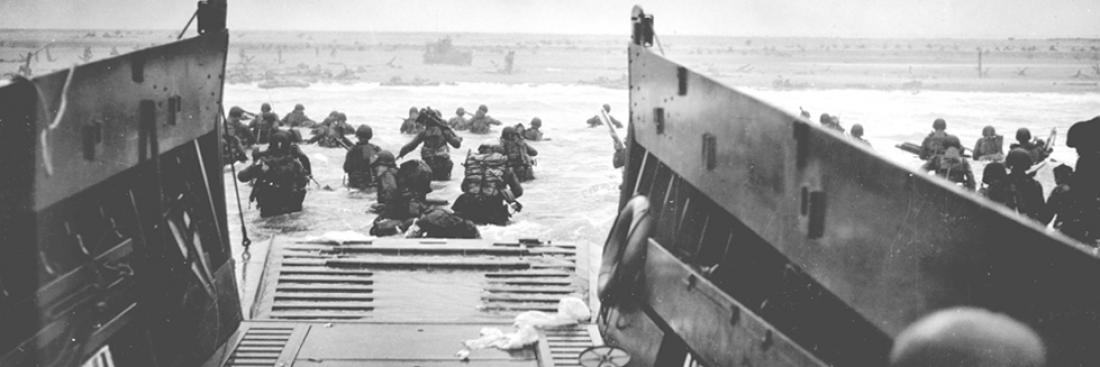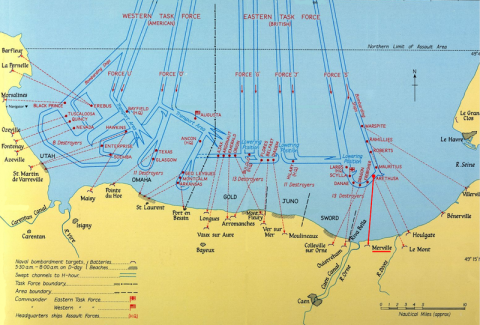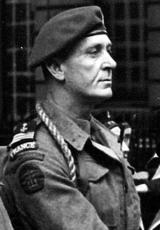D Day in Normandy

The events of the 6th June 1944, ”D Day”, represent one of the key phases of the Second World War. Planned during meetings in Casablanca (January 1943) and Quebec (August 1943) its elaboration required long consultation between the allied powers, whose strategic aims were not the same, as well as meticulous technical preparation.
Objections were raised not about the need for a landing in itself but on its location (France's Mediterranean or Atlantic coast...), on the date (1943 or 1944 ...) and on the practical details of the attack (everyone was still conscious of the resounding failure of Operation Jubilee on the 19th August 1942). Only the United States had the potential industrial ability to prepare to fuel such an operation and so they naturally had the upper hand in the actual military organisation. General Eisenhower ,who had been successful with Operation Torch in November 1942 (the landing of allied troops in French North Africa) was appointed head of Operation Overlord (December 1943).
The site that was eventually chosen was the bay of the Seine: these beaches were less fortified than the rest of the coast and could be easily isolated if the bridges on the Seine and the Loire were destroyed from the air.
Naval bombardment of the landing beaches, Source: UK Government, free of copyright.
Click on the map to enlarge
The training of the troops was intensive and the mobilised military resources considerable, as was preparation for the operation. The south of England became an enormous military camp where equipment was stored in its tens and thousands (tanks, canons and vehicles etc; the most symbolic example of which was the Willys Jeep , more than 600,000 of which were produced and used for every purpose because of their robustness, handling capabilities and speed; 17 million Jerry cans were used for transporting fuel). For the 6 weeks leading up to the landings, the allied air force systematically bombarded the north western quarter of France to distract the enemy (Operation Fortitude). The technical ingenuity of the Allies was astounding: two artificial harbours were built to facilitate the transfer of supplies (they would be established at Omaha Beach, ahead of Saint-Laurent-sur-mer and at Gold Beach ahead of Arromanches).
On the other side, the Germans started the construction of the Atlantic Wall, an enormous line of fortifications designed to resist violent attacks.
During 2 years of intense work carried out by the Todt Organisation (requisitioned companies using prisoners) around 15,000 fortified structures were built, spread along the western coasts of Europe. The strategy was completed by a system of defences conceived by Marshal Rommel and constructed from November 1943 onwards: it comprised of obstacles of all kinds (stakes, rails, tree trunks, lumps of steel and concrete, metal rollers etc.) usually fitted with explosive charges. In the dunes, barbed wire and mines were set, as well as ”Rommel's Asparagus”, stakes about 2 to 3 metres high, surrounded by mines and explosives and linked together by wires that activated charges when one of them was tripped.
The operations
Whatever the outcome, the thought prevailed on both sides that the battle of the beaches would be decisive. Unfavourable weather conditions delayed the operation, originally scheduled for the 5th June, by 24 hours.
Overnight on the 5th to 6th June, parachute units were dropped behind the German lines of defence to neutralise certain key points, mark particular areas and block the approach of German reinforcements towards the landing beaches.
On the 6th June 1944 5 divisions, transported in around 4,300 landing craft and protected by about 500 warships landed at daybreak on the five beaches codenamed Utah, Omaha, Gold, Juno and Sword. Despite the element of surprise and the fire power engaged, the determination of the German riposte inflicted heavy losses on the Allies during the first few hours of the morning; the conquest of Omaha Beach in particular was very difficult.
In this operation France was represented on the ground by the legendary 1st battalion of marine fusiliers (1st BFM) under Lieutenant Ship-of-the-line Kieffer (better known by the name ”commando Kieffer”) who landed at Sword with the British. Comprising mainly of the Bretons and Normans who had joined General de Gaulle in 1940, the 1st BFM distinguished itself by storming the casino in Ouistreham, which was fiercely defended by the Germans, in a heroic feat of arms.
Throughout the day on the 6th June, the Allies would establish bridge heads to ensure the continuous arrival of reinforcements and equipment. The Germans, sceptical at the start of the offensive, became aware of its importance rather belatedly, but reacted with pugnacity once they regained their composure. Fighting on the ground then became fierce, whilst the towns were systematically targeted with bombing by the allied air force (particularly Saint-Lo, Falaise and Caen).
By nightfall the situation had stabilised but remained uncertain. Whilst German reinforcements converged from all around on the fighting zones, the Allies, taking advantage of the lack of German naval and aerial response, succeeded in landing 156,000 men and around 20,000 vehicles of all types. Allied human losses totalled about 10,500 men, of whom a third were killed in the fighting. Overall the landings were a success (the German coastal defences were destroyed and at no point were the attacking forces pushed back out to sea), but the results were mixed since all the objectives had not been achieved and the position remained wide open at Omaha Beach. The success of this, the ”longest day”, is what really began the Battle of Normandy, the second phase of the liberation of France.
This text was mainly inspired by Jean-Bernard Moreau's book, ”Le débarquement et la bataille de Normandie”, published by the Caen Memorial, 2002.



